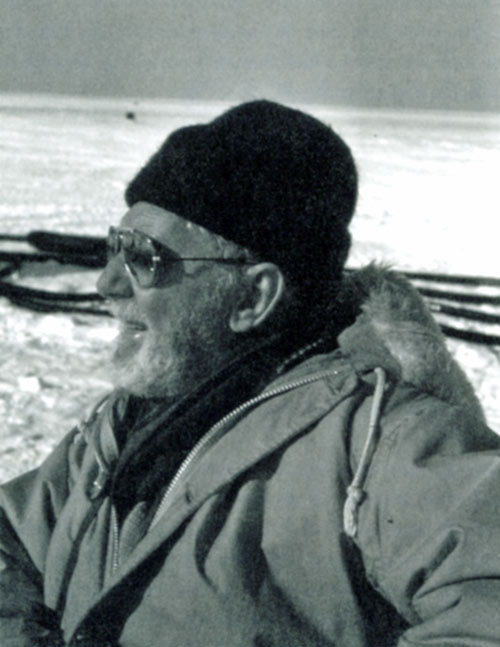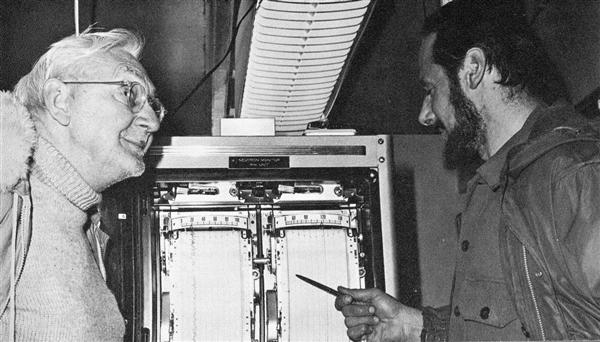Sir Charles Wright

Sir Charles Wright, sometimes nicknamed "Silas" for his middle name Seymour, was the subject of the recent book Return to Antarctica by his grandson Adrian Raeside, as well as the earlier diary compilation Silas by daughter Pat Wright and Colin Bull (Amazon.com link). He was on the ice in 1960-61 for the 50th anniversary of Scott's 1910-13 Terra Nova expedition, with which he had served as the physicist. During that expedition, he had been a member of the party that accompanied Scott's polar party on the first leg of their trip south, and he was also a member of the team that found the tent containing the bodies and diaries. Above he is seen during his visit to Byrd Station early in the 1960-61 season. He had continued working in science throughout his life. After World War II he moved to North America, working in the United States as well as his native Canada. In 1960 he was at the Pacific Naval Laboratory (PNL) in Victoria, BC. He was working on a submarine detection system using magnetic sensors which were to be placed on the ocean floor. What was received, however, was a lot of "noise" generated by small geomagnetic changes. Sir Charles became more interested in these signals than those from submarines and convinced the PNL people that this "noise" needed to be studied for the sub detection system to work and that Antarctica would be an ideal place. The project worked closely with the Stanford VLF people, who operated his equipment at Byrd and elsewhere. (The US National Bureau of Standards later became involved with the radionoise project--NBS w/o researcher Carl Disch was lost after leaving the Byrd radionoise building in May 1965.) On 12 February 1961, at the end of the season, Sir Charles accompanied John Behrendt on a turnaround flight to Pole to take a gravity reading, making the 3-hour trip in a VX-6 Hercules aircraft over the same route that Scott's party had failed to negotiate. While on the ice, he steadfastly refused to talk about the Scott expedition, even after being primed with a few drinks. And at the end of the 1960-61 season, a large crowd had gathered to say goodbye to this near legend. Just as he was about to get on the plane someone asked how he liked Antarctica after so many years. His reply: "Personally, I hate the f--king place!" He then turned and disappeared into the plane. Below, another picture of Sir Charles (left) in McMurdo in the old cosray lab (the one later reassembled at Pole), he's being briefed by 1960 winterover Hugo Neuberg. Sir Charles Wright returned to the ice again in 1965, and he died in 1975. Here's Adrian Raeside's site about the book and documentary, with a gallery of many photos and illustrations from the 1910-1913 expedition. Adrian was an editorial cartoonist for the Victoria BC Times Colonist until 2015, and he's published several other books which are mentioned on his main website. Here is a 2008 Times Colonist article which describes Sir Charles Wright's ice experiences and family ties. Sources...the photo at the top of the page was taken by geophysicist John Behrendt, it appears in his book The Ninth Circle, ©1965, and is used by permission. John's book also documents his and Silas's 1961 visit to Pole...thus creating that interesting trivia question: "What member of Robert Falcon Scott's 1910-13 Terra Nova expedition traveled to the South Pole and returned to tell the tale?" The photo in the cosray lab is a U.S. Navy photograph which appeared in the Deep Freeze 61 cruisebook. Much of the other description above comes from then-Stanford (and later Dartmouth) Antarctic VLF researcher Mike Trimpi...and the original source of that departure quotation was NSF representative Ken Moulton. |
